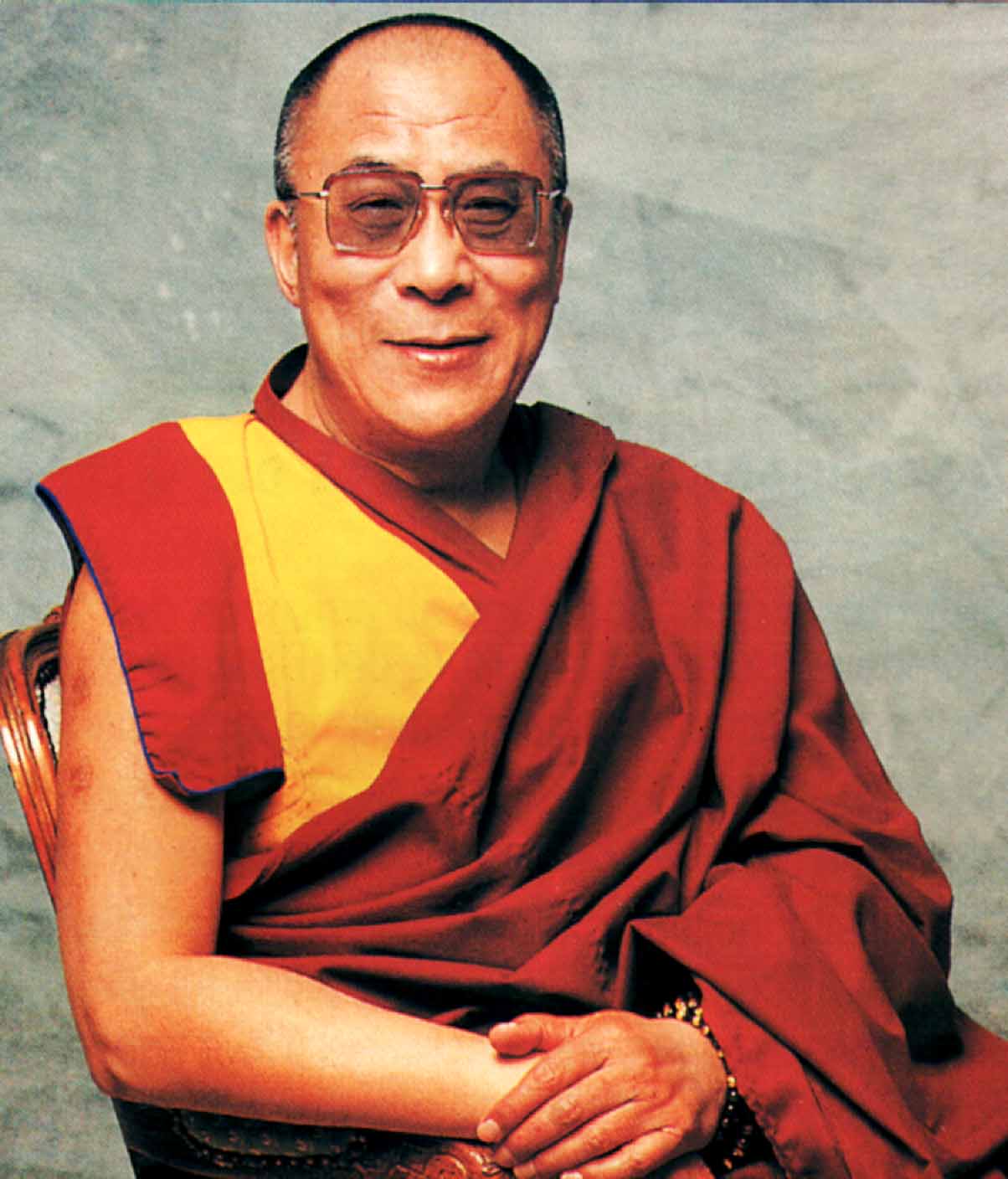Individual Power to Shape Institutions
Anger plays no small role in current conflicts such as those in the Middle East, Southeast Asia, the North- South problem, and so forth. These conflicts arise from a failure to understand one another’s humanness. The answer is not the development and use of greater military force, nor an arms race. Nor is it purely political or purely technological. Basically it is spiritual, in the sense that what is required is a sensitive understanding of our common human situation. Hatred and fighting cannot bring happiness to anyone, even to the winners of battles. Violence always produces misery and thus is essentially counter-productive. It is, therefore, time for world leaders to learn to transcend the differences of race, culture, and ideology and to regard one another through eyes that see the common human situation. To do so would benefit individuals, communities, nations, and the world at large.
The greater part of present world tension seems to stem from the ‘Eastern bloc’ versus ‘Western bloc’ conflict that has been going on since World War II. These two blocs tend to describe and view each other in a totally unfavourable light. This continuing, unreasonable struggle is due to a lack of mutual affection and respect for each other as fellow human beings. Those of the Eastern bloc should reduce their hatred towards the Western bloc because the Western bloc is also made up of human beings – men, women, and children. Similarly those of the Western bloc should reduce their hatred towards the Eastern bloc because the Eastern bloc is also human beings. In such a reduction of mutual hatred, the leaders of both blocs have a powerful role to play But first and foremost, leaders must realize their own and others’ humanness. Without this basic realization, very little effective reduction of organized hatred can be achieved.
If, for example, the leader of the United States of America and the leader of the Union of Soviet Socialist Republics suddenly met each other in the middle of a desolate island, I am sure they would respond to each other spontaneously as fellow human beings. But a wall of mutual suspicion and misunderstanding separates them the moment they are identified as the ‘President of the USA’ and the ‘Secretary-General of the USSR.’ More human contact in the form of informal extended meetings, without any agenda, would improve their mutual understanding; they would learn to relate to each other as human beings and could then try to tackle international problems based on this understanding. No two parties, especially those with a history of antagonism, can negotiate fruitfully in an atmosphere of mutual suspicion and hatred.
I suggest that world leaders meet about once a year in a beautiful place without any business, just to get to know each other as human beings. Then, later, they could meet to discuss mutual and global problems. I am sure many others share my wish that world leaders meet at the conference table in such an atmosphere of mutual respect and understanding of each other’s humanness.
To improve person-to-person contact in the world at large, I would like to see greater encouragement of international tourism. Also, mass media, particularly in democratic societies, can make a considerable contribution to world peace by giving greater coverage to human interest items that reflect the ultimate oneness of humanity. With the rise of a few big powers in the international arena, the humanitarian role of international organizations is being bypassed and neglected. I hope that this will be corrected and that all international organizations, especially the United Nations, will be more active and effective in ensuring maximum benefit to humanity and promoting international understanding. It will indeed be tragic if the few powerful members continue to misuse world bodies like the UN for their one-sided interests. The UN must become the instrument of world peace. This world body must be respected by all, for the UN is the only source of hope for small oppressed nations and hence for the planet as a whole.
As all nations are economically dependent upon one another more than ever before, human understanding must go beyond national boundaries and embrace the international community at large. Indeed, unless we can create an atmosphere of genuine cooperation, gained not by threatened or actual use of force but by heartfelt understanding, world problems will only increase. If people in poorer countries are denied the happiness they desire and deserve, they will naturally be dissatisfied and pose problems for the rich. If unwanted social, political, and cultural forms continue to be imposed upon unwilling people, the attainment of world peace is doubtful. However, if we satisfy people at a heart-to-heart level, peace will surely come.
Within each nation, the individual ought to be given the right to happiness, and among nations, there must be equal concern for the welfare of even the smallest nations. I am not suggesting that one system is better than another and all should adopt it. On the contrary, a variety of political systems and ideologies is desirable and accords with the variety of dispositions within the human community. This variety enhances the ceaseless human quest for happiness. Thus each community should be free to evolve its own political and socioeconomic system, based on the principle of self-determination .
The achievement of justice, harmony, and peace depends on many factors. We should think about them in terms of human benefit in the long run rather than the short term. I realize the enormity of the task before us, but I see no other alternative than the one I am proposing – which is based on our common humanity. Nations have no choice but to be concerned about the welfare of others, not so much because of their belief in humanity, but because it is in the mutual and long-term interest of all concerned. An appreciation of this new reality is indicated by the emergence of regional or continental economic organizations such as the European Economic Community, the Association of South East Asian Nations, and so forth. I hope more such trans-national organizations will be formed, particularly in regions where economic development and regional stability seem in short supply.
Under present conditions, there is definitely a growing need for human understanding and a sense of universal responsibility. In order to achieve such ideas, we must generate a good and kind heart, for without this, we can achieve neither universal happiness nor lasting world peace. We cannot create peace on paper. While advocating universal responsibility and universal brotherhood and sisterhood, the facts are that humanity is organized in separate entities in the form of national societies. Thus, in a realistic sense, I feel it is these societies that must act as the building-blocks for world peace.
Attempts have been made in the past to create societies more just and equal. Institutions have been established with noble charters to combat anti-social forces. Unfortunately, such ideas have been cheated by selfishness. More than ever before, we witness today how ethics and noble principles are obscured by the shadow of self-interest, particularly in the political sphere. There is a school of thought that warns us to refrain from politics altogether, as politics has become synonymous with amorality. Politics devoid of ethics does not further human welfare, and life without morality reduces humans to the level of beasts. However, politics is not axiomatically ‘dirty.’ Rather, the instruments of our political culture have distorted the high ideals and noble concepts meant to further human welfare. Naturally, spiritual people express their concern about religious leaders ‘messing’ with politics, since they fear the contamination of religion by dirty politics.
I question the popular assumption that religion and ethics have no place in politics and that religious persons should seclude themselves as hermits. Such a view of religion is too one-sided; it lacks a proper perspective on the individual’s relation to society and the role of religion in our lives. Ethics is as crucial to a politician as it is to a religious practitioner. Dangerous consequences will follow when politicians and rulers forget moral principles. Whether we believe in God or karma, ethics is the foundation of every religion.
Such human qualities as morality, compassion, decency, wisdom, and so forth have been the foundations of all civilizations. These qualities must be cultivated and sustained through systematic moral education in a conducive social environment so that a more humane world may emerge. The qualities required to create such a world must be inculcated right from the beginning, from childhood. We cannot wait for the next generation to make this change; the present generation must attempt a renewal of basic human values. If there is any hope, it is in the future generations, but not unless we institute major change on a worldwide scale in our present educational system. We need a revolution in our commitment to and practice of universal humanitarian values.
It is not enough to make noisy calls to halt moral degeneration; we must do something about it. Since present-day governments do not shoulder such ‘religious’ responsibilities, humanitarian and religious leaders must strengthen the existing civic, social, cultural, educational, and religious organizations to revive human and spiritual values. Where necessary, we must create new organizations to achieve these goals. Only in so doing can we hope to create a more stable basis for world peace.
Living in society, we should share the sufferings of our fellow citizens and practise compassion and tolerance not only towards our loved ones but also towards our enemies. This is the test of our moral strength. We must set an example by our own practice, for we cannot hope to convince others of the value of religion by mere words. We must live up to the same high standards of integrity and sacrifice that we ask of others. The ultimate purpose of all religions is to serve and benefit humanity. This is why it is so important that religion always be used to effect the happiness and peace of all beings and not merely to convert others.
Still, in religion there are no national boundaries. A religion can and should be used by any people or person who finds it beneficial. What is important for each seeker is to choose a religion that is most suitable to himself or herself. But, the embracing of a particular religion does not mean the rejection of another religion or one’s own community. In fact, it is important that those who embrace a religion should not cut themselves off from their own society; they should continue to live within their own community and in harmony with its members. By escaping from your own community, you cannot benefit others, whereas benefiting others is actually the basic aim of religion.
In this regard there are two things important to keep in mind: self-examination and self-correction. We should constantly check our attitude toward others, examining ourselves carefully, and we should correct ourselves immediately when we find we are in the wrong.
Finally, a few words about material progress. I have heard a great deal of complaint against material progress from Westerners, and yet, paradoxically, it has been the very pride of the Western world. I see nothing wrong with material progress per se, provided people are always given precedence. It is my firm belief that in order to solve human problems in all their dimensions, we must combine and harmonize economic development with spiritual growth.
However, we must know its limitations. Although materialistic knowledge in the form of science and technology has contributed enormously to human welfare, it is not capable of creating lasting happiness. In America, for example, where technological development is perhaps more advanced than in any other country, there is still a great deal of mental suffering. This is because materialistic knowledge can only provide a type of happiness that is dependent upon physical conditions. It cannot provide happiness that springs from inner development independent of external factors.
For renewal of human values and attainment of lasting happiness, we need to look to the common humanitarian heritage of all nations the world over. May this essay serve as an urgent reminder lest we forget the human values that unite us all as a single family on this planet.
I have written the above lines
To tell my constant feeling.
Whenever I meet even a ‘foreigner’,
I have always the same feeling:
‘I am meeting another member of the human family.’
This attitude has deepened
My affection and respect for all beings.
May this natural wish be
My small contribution to world peace.
I pray for a more friendly,
More caring, and more understanding
Human family on this planet.
To all who dislike suffering,
Who cherish lasting happiness –
This is my heartfelt appeal.
![]()


















